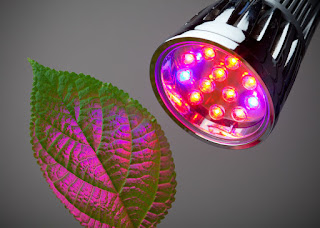To ensure healthy growth during the seedling and vegetative stages of a plant’s growth cycle, you must provide it with a strong foundation to boost growth. During this stage, the crucial factor is lighting, which serves as the main driving energy for the growth of the plant. Using a high quality light designed for maximum photosynthetic power will help your young plants establish a strong foundation which will allow them to growth healthy and strong, and give bountiful yields and a higher return on investment.
Of all the equipment that growers use in an indoor garden, the most consideration should go for the lighting system. Proper lighting will influence the growth of the plants and ensure good health to guarantee a strong final yield. When indoor horticulturists want to improve their indoor plants, they often utilize LED grow lights.
Before going in-depth to how these lights affect the growth of plants, first, a grower must understand why lighting is so important. Once a grower understands that concept, they can maintain, upgrade, and assess their indoor garden lighting system to suit the garden. For example, as an indoor grower, you may consider having multiple setups or rooms for different plant growth stages but depending on the type of crop, you have to consider the use of different lighting spectrums and wavelengths.
Light as a Crucial Foundation of Indoor Plant Growth
Plants absorb most light during their seedling and vegetative stage, which in return works as the foundation to influence their entire growth cycle. These days, horticultural Dorm Grow lighting solutions help to promote the healthy growth of plants, while operating both efficiently and effectively. There are different lighting technologies available today, but not all work efficiently to guarantee a grower’s ROI.
Proper Lighting for the Seedling/Cloning Stage
The seedling stage is a critical stage that an indoor gardener has to master if they are to have an everlasting garden. Although this could vary from one plant/crop to another, keeping the right atmospheric conditions and factors consistent like the lighting is crucial. At this stage, proper lighting will not only guarantee success rates but also boost the rate at which plants rotate into their subsequent growth stages.
High-Intensity Discharge (HID) Lighting Systems
High-Intensity Discharge lighting systems include High-Pressure Sodium, and metal halide lighting, are good for the growth stages of a plant’s development. Although these lights work well for the seedling stage of younger plants, they have a few disadvantages. HIDs produce a lot of heat and this can damage plants, especially when they are young and tender. Although they give off a strong light, a HID lighting system is not a preferred choice for indoor gardens when you take into consideration environmental factors such as heat buildup, ventilation consistency and efficiency.
Light Emitting Diodes (LED) Grow Lights
Most indoor gardeners prefer high quality LED lights for plant seedling stages. They are ideal because they produce less heat than HIDs and generally have lower wattages. This is important because the amount of light energy plants require is easy to calculate by the space of the garden. Another advantage is they cut down power costs by as much as 60%. They are available in different wattages so finding the suitable one for your space is not difficult. These lights also help to keep pests away, thus reducing the need to use insecticides and other chemicals.
Investing in LED grow lights can prove to be a worthwhile investment. They can be used year round, even in the hot summer months; they keep plants healthier, and are very efficient for indoor growing.
You find this article by searches related to following terms:
- led grow lights vs hps
- led grow lights for indoor plants
- led grow lights ebay
- LED Grow Lights
- led grow lights walmart
- led grow lights for seedlings
- led grow lights amazon
- led grow lights lowes
- led grow lights reviews
- led grow lights for sale
